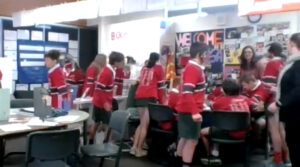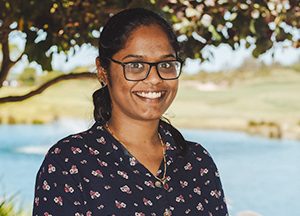
Hands-on science is extremely effective in cementing learning, but has made so much more difficult by COVID-restrictions in 2020
FLEET scientists seeking new, creative ways to do science outreach found a silver lining in Covid-19 restrictions: they actually improved the experience for students.
A team of FLEET-UNSW PhDs and early-career researchers (ECRs) was able to bridge 2020’s Covid restrictions to safely engage a classroom of students with virtual, but hands-on science.
Led by PhD student Vivasha Govinden and node administrator Cecilia Bloise, the team engaged via Zoom with students from kindergarten through to Year 7 at two schools: one in Sydney and another in Melbourne.
After a short talk outlining the background of energy use in computing, FLEET’s virtual outreach team engaged the students with some of FLEET’s homegrown home-science experiments, which the students were able to perform in class.
Instructions for the home-science experiments were fleshed out behind the scenes by other FLEET members, exercising their own science communication muscles in a difficult year for public outreach.

FLEET’s Vivasha Govinden who coordinated the project from UNSW, working with researchers across the Centre to develop material
“I think there is a silver lining in this,” says FLEET’s Vivasha Govinden. “I really like the idea of having the kids doing the science themselves, rather than watching us do demonstrations (as we would have a year ago, for example), as it boosts their confidence, rather than leaving them as passive observers”.
By performing the experiments themselves, the students realise they can do science too. And that is an extremely effective way to evoke a passion for doing science.
“A unanimous ‘WOW!’ came from all four classrooms when the LED light lit up, just by connecting two thick pencil tracks to a 9 V battery,” says FLEET Research Fellow Dr Peggy Schoenherr (UNSW), who helped guide Victorian students through the activities.
Some of the students found alternative ways to light the LEDs, discovering for themselves the joy of scientific, curiosity-driven experiment.
Jotting down their hypotheses – ‘what do you think is happening?’ – and their conclusions, the class was stepped through a taster of the scientific method.
“This outreach program made the kids realise that you don’t necessarily need sophisticated laboratory equipment to do science,” says Vivasha Govinden. “With the help of simple household items such as matches and candles, you can do science yourself!”

